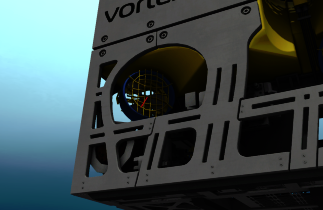/
Adding a Thruster
Adding a Thruster
In marine scenarios, you can add a thruster to drive marine vehicles, converting propeller rotation motion into thrust force in newtons (N).
The Thruster extension provides the ability to use an RPM-to-force table that defines the relationship between rotations per minute (RPM) of the propeller and the force exerted by the thrusters.
To add a thruster:
- Select Marine in the Toolbox.
- Double-click Thruster or drag it to the appropriate place in the Explorer panel to add it.
In the Properties panel, configure the following fields:
- Current RPM: Specifies the current RPM of the thruster.
- Thruster Force Vector: Selects the attachment point defining the position and direction in which the thrust (i.e., the external force induced by the propeller motion) is applied on the vehicle. Movement along the +X-axis corresponds to positive thrust.
- Part: Selects the part on which the thrust is applied.
- RPM to Thrust Mapping CSV File: Defines the CSV file that defines the mapping between RPM and thrust. The CSV file must be of the following format (the first two lines are essential to proper operation):
"RPM to Thrust Force Mapping"
"RPM","Thrust"
-1000,-800
0,0
1000,800
The value pairs above are only examples. The first value represents the RPM necessary to generate the thrust specified as the second value.
The following outputs appear in the Properties panel:
- Thrust Vector: Thrust force (N) based on the RPM (vector) expressed in the world reference frame.
- Angular Velocity: Thruster's angular velocity in radians/sec.
- Thrust Force: Thrust force (N) based on the RPM (real value).
An accessory in the form of an arrow also appears showing the thrust force location and direction.
